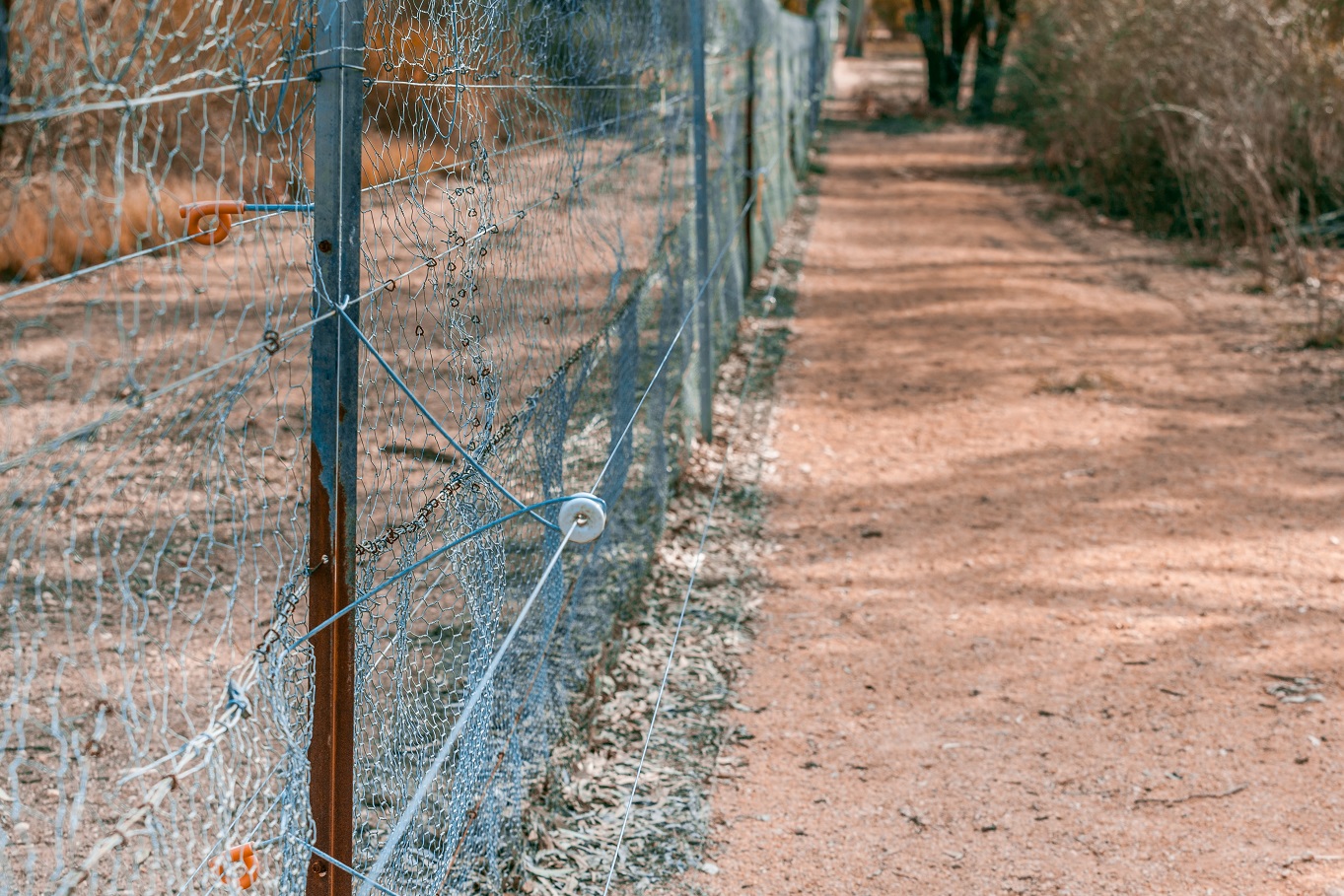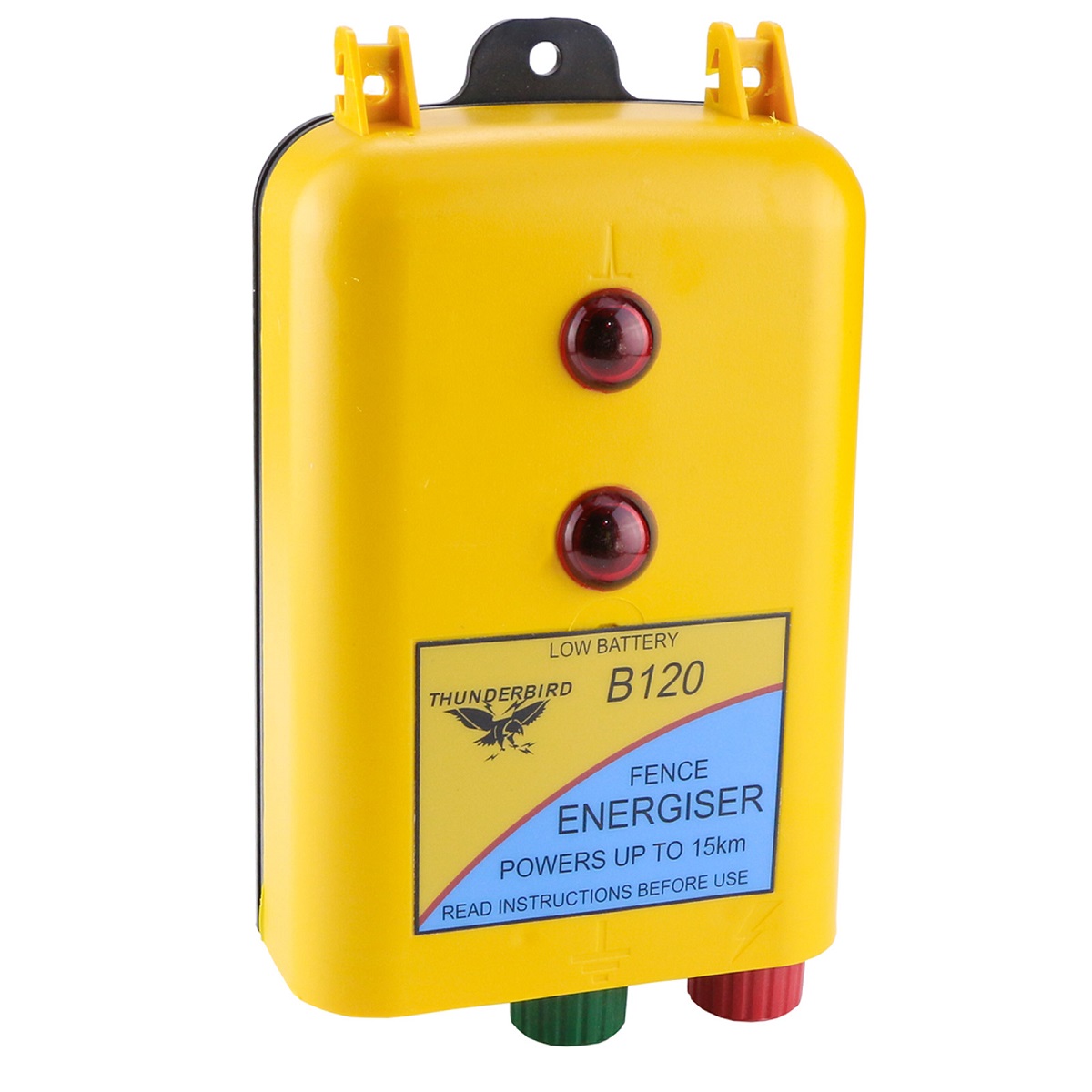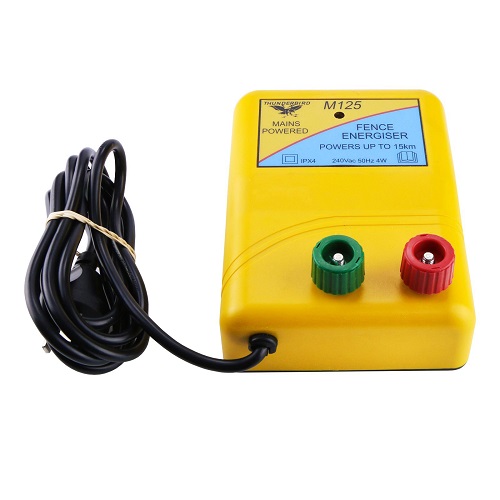Choosing an Energiser for Your Fence
Date Posted: 30 August 2019
What is an Electric Fence?
 An electric fence is designed to keep livestock in a controlled paddock or space. To work, it requires a device known as an energiser. This device is connected to an earth terminal and a mains (positive terminal), allowing it to produce high-voltage pulses. Each brief pulse repeats every one to two seconds.
An electric fence is designed to keep livestock in a controlled paddock or space. To work, it requires a device known as an energiser. This device is connected to an earth terminal and a mains (positive terminal), allowing it to produce high-voltage pulses. Each brief pulse repeats every one to two seconds.
Livestock will feel the pulses as “shock” whenever they touch the electrified fence. Therefore, they learn to respect this psychological barrier unlike with a conventional fence that works as a physical barrier only.
Electric fencing has become the norm in many farms all over the world, including Australia.
The Benefits of an Electric Fence
Improved Animal Safety
An electric fence system deters not just trespassers but also predators.
Cost-Efficient
When you have an electric fence, it does not have to require a heap of fancy materials and complex setups. By having your fence electrified there is less chance of the animals destroying fences, therefore upkeep can be very cost effective.
Easy Construction
Building an electric fence is relatively simple. You don’t need a lot of tools, which saves you time, money, and effort.
Flexibility
You can design a fence according to your situation. You can customise it based on your preferences, including the design and the spacing of the wires. There are also temporary electric fences options available, which you can conveniently move around quickly when required.
Electric Fence Regulations in Australia
The Australian Standard AS/NZS ISO 60335.2.76:2003 Amendment 2 talks about certain installation requirements about an electric fence. The AS/NZS ISO 3014:2003 provides all the full details regarding electric fencing in the country.
According to the standard, an electric fence should be installed and operated in a way that they do not cause any danger to people and their surroundings, including to the animals themselves. The fence should be constructed carefully so they don’t lead to animal entanglement, as well as the people who may move closer to the fence.
The Australian standard also states that the fence should not be supplied using two separate energisers. If there are two separate fences, the distance between the two wires of the independently timed energisers should be at least 2.5 metres. A closer gap requires an electrically insulating material. Sometimes, an isolated metal barrier may suffice.
Other Things to Comply With Include
- You must not use an energiser to electrify a razor or barbed wire.
- If you have a non-electrified fence, you can use a barbed or razor wire to support electrified wires on the fence. You should use supporting devices to ensure that the wires are within a distance of at least 150mm from the non-electrified wires.
- It is necessary that the energiser’s earth electrode be at least 10 metres away from other earthing systems, including the mains power and telecommunications system earth.
- If the connecting leads of the electric fence are located within a building, they should be insulated effectively from the earthed building parts. The farmer should only use suitable insulated cables with high-voltage.
- An electric fence with its connecting wires and leads installed close to an overhead power line should have a clearance of at least three metres for up to 1,000V. For 1,000V to 33,000V, the clearance should be four metres. Anything above 33,000V should have a clearance of eight metres.
- If your electric fence is intended to deter birds, it should not be linked to an earth electrode.
One of the most important things to remember is that you should fit a warning sign at every point where a person may gain access. The sign should measure at least 100mm x 200mm with the background colour set to yellow. The lettering, which should be at least 25mm in height, should be indelible and written on both sides.
How to Select the Right Electric Fence Energiser
An electric fence needs the following:
- Fence wire or tape
- Earth stakes
- Insulators
- Warning signs
- End strainers
- Fence posts
- Connection bolts
- Fence energiser
An energiser is an essential aspect of your setup. It varies in power source and output. There are three main groups to choose from, which are:
Battery-Powered
 A battery-powered energiser can be very low in power, simply created for strip grazing, or other temporary fencing arrangements. Our most popular battery-powered energiser is the Thunderbird B120 (pictured). They are the perfect all-rounder powering up to 15km and also have the option of adding an A.C. power adaptor for permanent fences.
A battery-powered energiser can be very low in power, simply created for strip grazing, or other temporary fencing arrangements. Our most popular battery-powered energiser is the Thunderbird B120 (pictured). They are the perfect all-rounder powering up to 15km and also have the option of adding an A.C. power adaptor for permanent fences.
Battery life can depend on many things, including how many live wires you are running and how long your fence is, be sure to get a rough but fairly accurate estimate of the fence you are going to electrify.
Mains-Powered
A mains-powered energiser is a preferred option for those who want to use a permanent electric fence application. This type of energiser does not require a battery and is maintenance-free.
A good example of a mains-powered energiser is the Thunderbird M125, which has a range of 15km. This product is AS/NZS approved and certified. Most energisers these days come with simple little time-saving features like these. The mentioned product has a light flash on the front of the case with every pulse.
When looking for a mains-powered energiser, be sure to check how it is rated when it comes to reliability and toughness. It should have a sealed case and which can help increase its lifespan and be sure to check its warranty to cover yourself in the unlikely event of an issue.
Solar-Powered
Over the past several years, solar has continued to boom in Australia. This is why it is not surprising that solar-powered energisers and growing in popularity year on year. In most cases, these units are fully self-contained with an internal battery. Instead of recharging them the traditional way, they use solar energy and the internal (or in some cases, external) battery for those patches of wet weather.
Solar-powered energisers are connected to a battery, which is the energisers rechargeable storage system. If you are familiar with solar panels and how the solar system works, these energisers function in exactly the same way. Solar panels are used to recharge the battery, taking sunlight as a source of power.
When purchased as a package, you can be sure it is designed with balance in mind. The power that you can access matches the power required for operating the unit. With such a balance, you know that the fence has sufficient stored energy that will last during periods of bad weather.
A good example of a solar-powered electric fence energiser is the Thunderbird S180B. This product is Australian-made with a 2-year warranty and is the largest self-contained unit on the market. It has battery management software, allowing you to monitor how it recharges itself using your solar panels. This intelligent unit can adjust its output based on the collected solar power.
Which Type Should You Choose?
To make sure that you have the best energiser, you may want to consider your situation first. While mains powered energisers are popular, are they the right solution for you? Before you purchase, you should consider the following factors:
Do You Have Mains Power Available?
 For most users, the best option is to use mains power. However, it may not be available in some cases. As much as possible, you should select a mains-powered energiser because they are more economical than battery-powered energisers. They run without needing batteries, which lowers maintenance costs.
For most users, the best option is to use mains power. However, it may not be available in some cases. As much as possible, you should select a mains-powered energiser because they are more economical than battery-powered energisers. They run without needing batteries, which lowers maintenance costs.
The Thunderbird M125 (pictured) is a mains-powered electric fence energiser is one of our most popular units for the hobby farmers.
What is the Condition of Your Fence?
It is not easy to build a fence, which is why proper planning is required. Your fence can easily be subjected to heavy weed growth and poor insulation. Overhanging foliage may also be a problem. If there is a possibility that you will have to face any of these issues, you will need a powerful energiser. It should be effective enough at powering your fence up, especially when exposed to certain conditions.
What Animals Do You Need to Control?
Every farmer should know that one animal may not respond the same way as other animals in terms of shocking them. Therefore, the way you set up your electric fence should depend on the type of livestock you are trying to keep at bay.
What Brand Should You Go For?
As with many other products you purchase, you get what you pay for with energisers. At The Grit, you can be sure that you will only find quality products that we deem fit to get the job done without disappointment.
The brands that we sell meet Australian and New Zealand standards. If you want to know how much you should pay and which brand to go for, it is simply about your livestock. We understand that you value the animals, which is why you should place huge importance on building a reliable electric fence.
